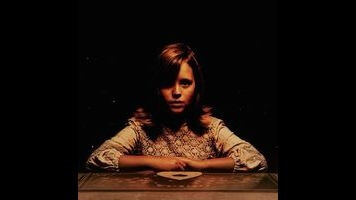Ouija: Origin Of Evil is much better than it needs to be

First, to answer the obvious question: Released on the all-important Halloween weekend in a slow October for horror movies, Ouija was the No. 1 movie in America for one week in 2014, earning enough return on Universal’s investment to justify green-lighting another film. That film, Ouija: Origin Of Evil, is also debuting close to Halloween and is the only wide-release, PG-13 horror movie opening for the holiday weekend (its closest competition, Rob Zombie’s 31, is in limited release). Thus, it should easily recoup its modest $9 million production budget. So don’t be surprised if you see Ouija 3 at your local multiplex two years from now.
There, now that that’s out of the way: To call Ouija: Origin Of Evil a sequel that improves on its predecessor is practically an insult to its co-writer and director, Mike Flanagan. Although still enough of an up-and-comer to take a presumed work-for-hire gig like this one, Flanagan has a couple of solid genre films on his résumé already; at this point in his career, it would have been surprising if Origin Of Evil wasn’t better than Ouija. It is better, though, in every conceivable way, from casting to story to atmosphere.
Not that this is a work of genius by any means. Origin Of Evil’s imagery and tone can be succinctly, if reductively, described as “Conjuring lite” and revolve around the hoary trope of a spooky little girl in white contact lenses and a frilly nightgown. But with a serious horror director like Flanagan at the helm, Origin Of Evil is more thoughtful and more meticulously crafted than it needs to be. For those who did see the first film, this prequel builds on the backstory of the house where Shelley Hennig’s character finds the spirit board at the beginning of Ouija, a respectful take on the material that cleverly comes together toward the end of the second act. But if you haven’t seen the first one, you’ve got nothing to worry about; this works fine as a stand-alone film as well.
We open in Los Angeles in 1965, where young widow Alice Zander (Elizabeth Reaser) lives with her two young daughters, rebellious high-school sophomore Paulina (Oculus’ Annalise Basso) and innocent 9-year-old Doris (Lulu Wilson). Alice and the girls barely make ends meet with an old-fashioned spiritualist-style seance scam, and after playing with one at a party, Paulina suggests that her mother should buy a Ouija board to liven up their act. Alice obliges, but almost as soon as she opens the box, the forces haunting the board (or is it the house?) have poor, sweet Doris in a spiritual headlock. At first, second-generation medium Alice is thrilled with her youngest daughter’s newfound psychic powers, and she pulls Doris out of school to help with the family business. Paulina, meanwhile, suspects there’s something sinister about her sister’s “gift” and that the spirit claiming to be their dead father who talks to Doris every night isn’t their father at all. She’s right.
That shouldn’t be much of a spoiler, and not just because the word “evil” is right there in the title. (“Origin Of Closure” just doesn’t have the same pizzaz.) Flanagan doesn’t skimp on showing the audience the malevolent beasties that possess young Doris, introducing Doug Jones in one of his famous motion-capture roles as Marcus, a pitch-black, oily-looking demon with sickly yellow eyes, quite early on in the film. Once Marcus slithers down her throat after she looks into the Ouija planchette in front of a mirror, Doris starts exhibiting Exorcist-like symptoms—including scampering up walls like a spider and an infernal, mouth-stretching scream powerful enough to throw someone across a room—achieved through a combination of prosthetics and CGI.
Doris’ unholy sickness is introduced slowly, leading to an all-out horror sequence in the Zanders’ basement that takes up the last 20 minutes or so of the film. Even at its most intense, though, Origin Of Evil stays at a PG-13 level of terror at which seasoned horror fans will barely flinch. (The film is relatively light on jump scares.) Instead, take a moment to appreciate the impeccably sourced mid-century set decoration and wardrobe design—oh, to have access to the warehouse where all that vintage furniture is stored!—as well as the period-appropriate color palette, highlighting rich auburns and olive greens. Also worth noting is Flanagan’s mobile camera, highlighting the strife between the sisters in a series of disorienting rotating Steadicam shots.
At its core, this is a movie about sisters, and Basso and Wilson are well cast as such, striking the right mixture of animosity and affection. (The entire cast is quite strong, selling the grief and terror of the story equally.) It’s not, although it may seem like it’s heading that way at times, an explicitly Christian film, a subtle but important difference that sets it apart from James Wan’s retro haunted-house franchise. A long-delayed teen horror film based on a board game isn’t a particularly rich mythology from which to draw, and Origin Of Evil’s story is accordingly thin at times. But, given the circumstances, this is the absolute best-case scenario, and Universal Pictures can thank Mike Flanagan for that.